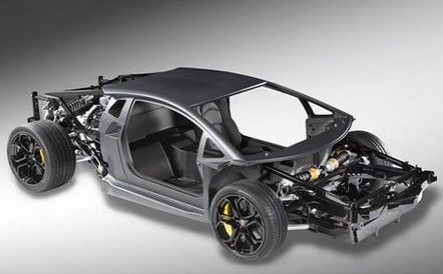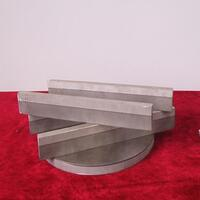1. Introduction
Ever seen a sleek modern building wrapped in shimmering copper or rust-colored steel? That’s likely a metal clad facade. From homes to high-rises, metal cladding is transforming how we design exteriors—and it’s not just about looks. The term ‘metal clad’ pops up everywhere: in roofing, siding, electrical wiring, and even industrial piping. But what exactly does ‘metal clad’ mean?

In simple terms, ‘metal clad meaning’ refers to a material or structure that’s covered or layered with metal for protection, durability, or aesthetics. Whether it’s a metal clad house sporting corrugated steel siding or an aluminum clad pipe insulated for efficiency, the applications are vast and varied.
2. Understanding Clad Metals
2.1. What Is Clad Metal Meaning?
Clad metals—also called alloy clad—are composite materials made by bonding two or more different metals together. This process enhances performance by combining the best properties of each metal. For example, aluminum clad stainless steel offers corrosion resistance from stainless steel and lightweight strength from aluminum.
Common combinations include stainless clad aluminum, titanium clad sheets, and copper nickel clad. These are widely used in aerospace, chemical processing, and marine environments where durability matters.
2.2. How Are Clad Metals Made?
Clad metals are typically created through roll bonding, explosion bonding, or electroplating. Electroless nickel plating and chromium electroplating are popular surface treatments that add wear or corrosion resistance.
You’ll also find specialized plates like 6061 T6 aluminum plate, 316 stainless steel plate, or corten steel plate—all available in various thicknesses like 1/8 inch steel plate or 3/16 metal plate—used as base materials for cladding or structural components.
3. Metal Cladding in Architecture
3.1. Metal Clad Walls and Facades
Architects love metal cladding for its versatility and modern appeal. A metal clad wall can feature anything from vertical standing seam metal siding to a dramatic corten steel facade that weathers beautifully over time.

Popular choices include zinc facade panels, copper siding, and corrugated steel facade systems. Corten steel siding cost varies, but its low maintenance and evolving patina make it a favorite for contemporary designs.
Other standout options: zinc clad dormers, PAC CLAD column covers, and standing seam facade systems that offer clean lines and weather-tight performance.
3.2. Metal Clad Roofs
Metal clad roofs are durable, energy-efficient, and long-lasting. Systems like Colorbond standing seam or PAC CLAD HWP (High Wall Panel) provide seamless coverage with minimal joints.
Zinc clad roofs age gracefully, while exterior corrugated metal siding offers a rustic-industrial vibe. PAC CLAD coping and accessories ensure watertight edges on metal clad buildings.
Whether it’s a metal clad shed or a full steel clad house, these roofs handle extreme weather and last decades with little upkeep.
4. Industrial and Electrical Applications
4.1. Metal Clad Wire and Cables
In electrical systems, ‘metal clad’ often refers to armored cables like metal clad electrical wire (MC cable). These feature a flexible metal sheath—usually aluminum or steel—that protects internal conductors from damage.
Types include aluminum clad steel wire, CU clad wire (copper-clad), and aluminum clad wire. They’re commonly used in commercial buildings, including in Pennsylvania, where code compliance is key.
Note: Metal clad wiring can be surface-mounted and is often paired with AFci breakers for safety in wet or high-risk areas.

4.2. Metal Clad Insulation and Piping
Aluminum clad pipe insulation wraps ducts and pipes to prevent heat loss and condensation. The reflective aluminum surface boosts thermal efficiency while resisting moisture and UV damage.
This type of metal clad insulation is standard in HVAC, industrial plants, and refrigeration systems.
5. Common Materials and Products
The world of metal clad includes a huge range of materials:
- Steel plate varieties: mild steel plate, boiler plate steel, thick steel plate, and carbon steel plate
- Stainless options: 316L SS plate, stainless steel diamond plate, and stainless checker plate
- Aluminum products: aluminum diamond tread plate, 5052 aluminum plate, and aluminum sheet for sale
- Specialty metals: titanium plate, bronze plate, brass plates for engraving, and nickel silver plate
You’ll also see terms like ‘aluminum clad sheet,’ ‘aluminium chequer plate,’ and ‘diamond plate steel’—all referring to textured or coated metal sheets used for slip resistance or decoration.
For those sourcing locally, phrases like ‘steel plate near me’ or ‘aluminium checker plate near me’ are common search queries among contractors and fabricators.
6. Popular Systems and Brands
PAC CLAD is a leading brand in architectural metal cladding. Their offerings include PAC CLAD standing seam roof panels, vertical standing seam metal siding, and custom column covers.
Other notable mentions: steel clad inc for structural solutions, and systems using 2024 T3 clad or 7075 T6 clad aluminum in aerospace applications.
When choosing a metal clad type, consider climate, budget, and design goals. Corten siding cost may be higher upfront, but its longevity offsets long-term expenses.
7. Conclusion
Metal clad isn’t just a buzzword—it’s a smart, stylish, and functional solution across construction and industry. From the rugged charm of a corten steel siding to the precision of aluminum clad stainless steel in engineering, clad metals deliver performance where it counts.
Whether you’re building a metal clad house, insulating pipes with aluminum clad pipe insulation, or wiring a commercial space with metal clad cable, understanding the ‘metal clad meaning’ helps you make informed, future-proof choices.
Our Website founded on October 17, 2012, is a high-tech enterprise committed to the research and development, production, processing, sales and technical services of ceramic relative materials such as What. Our products includes but not limited to Boron Carbide Ceramic Products, Boron Nitride Ceramic Products, Silicon Carbide Ceramic Products, Silicon Nitride Ceramic Products, Zirconium Dioxide Ceramic Products, etc. If you are interested, please feel free to contact us.
